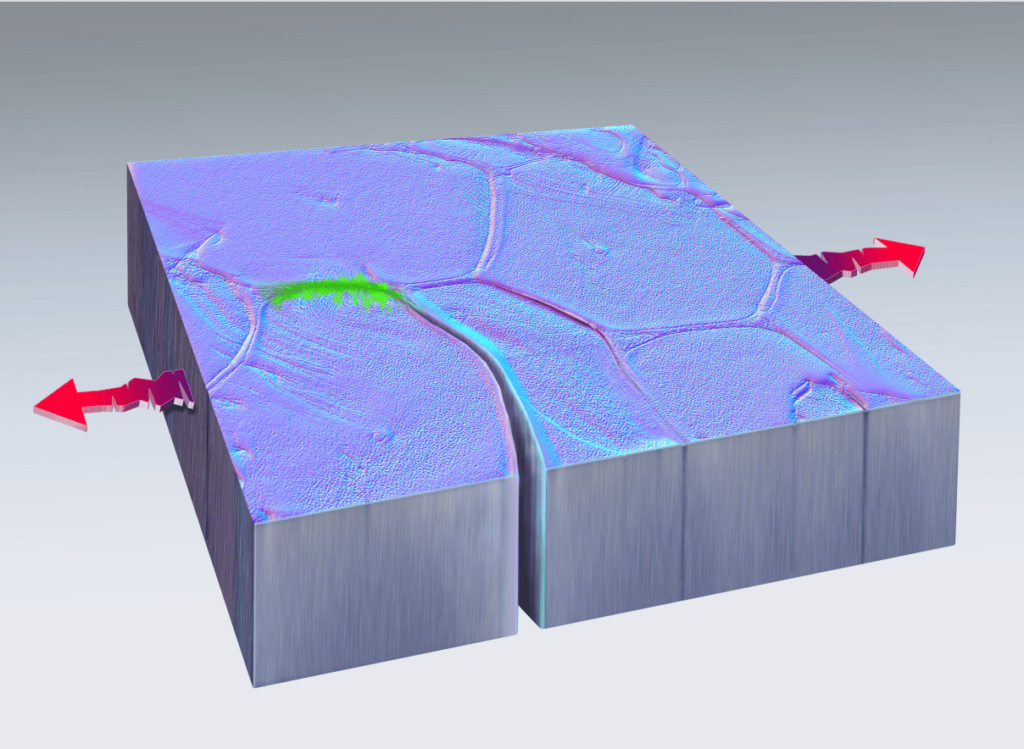Italian Scientists “Freeze” Light to Make a Supersolid for the First Time
Introduction:
When most people think of light, they may think of things like rays of sunlight or what they see when they flip on a light switch, but they definitely don’t think of it as a solid, and they shouldn’t have, until now.
On March 5, 2025, Italian researchers published a paper in the Nature Journal about how they “froze” laser light into a supersolid that has extraordinary properties.
A supersolid is a state of matter where particles condense to make crystalline solids but they move as if they are a liquid without viscosity (internal friction). In order to be formed, it has to be cooled to almost absolute zero. According to Bob Yirka, “a supersolid is a seemingly contradictory material- it is defined as rigid, but also has superfluidity, in which a liquid flows without friction.”
History of Research in Supersolids:
In the 1960s, supersolids were first predicted and they were first observed in 2017, but only in special gases.
They were also observed in 2024 by physicists in China. In order to form this supersolid, scientists had a compound of atoms which were positioned in triangular lattices which, when in a magnetic field, spin the same way. However, when they are not in a magnetic field, the atoms try to have a spin that opposes the spin of neighboring atoms. That’s where the triangle shaping comes in because it limits how many ways the atoms can orient themselves. With this shaping, researchers predicted that a supersolid with this material was possible, but only under the proper conditions. So, they put the material in an apparatus that allowed them to see the spin states and transitions of the atoms. After comparing several results to different theoretical calculations, they came to the conclusion that it was a supersolid.
How Light was Turned into a Supersolid:
At CNR Nanotec, Institute of Nanotechnology, in Lecce, Italy, Antonia Gianfate and Davide Nigro led a team of scientists with the goal of “freezing” light. However, the researchers didn’t simply lower the temperature to “freeze” light. Instead, they used quantum techniques such as using a photonic semiconductor platform that conducted photons similarly to how electrons are usually conducted.
To make a supersolid, the scientists fired their laser at gallium arsenide that had special ridges. When the light hit the ridges, it interacted with it and made polaritons (hybrid particles) that the ridges constrained, forcing the polaritons to become a supersolid.
The amount of photons (particles of light) increased and satellite condensates formed, which indicated that it was a supersolid. Since these condensates had opposite wavenumbers while having the same energy and having a specific spatial structure, it was confirmed that it was in a supersolid state.
Conclusion:
This recent breakthrough is a big step forward in the research into supersolids and the quantum world. In the future, supersolids could be crucial to doing things such as making more stable quantum computers and improving energy storage and materials.
The ability to “freeze” particles of light may seem to be something out of a science fiction book, but in 2025 it is the reality and this revolutionizing experiment will make supersolids easier to study so scientists can continue unlocking the secrets of the quantum realm.
References:
ET Online. (2025, March 12). Scientists freeze light: Researchers discover a rare state of matter where it flows like liquid but holds shape like a solid. Economic Times. Retrieved March 15, 2025, from https://economictimes.indiatimes.com/news/new-updates/scientists-freeze-light-researchers-discover-a-rare-state-of-matter-where-it-flows-like-liquid-but-holds-shape-like-a-solid/articleshow/118928851.cms
HT News Desk. (2025, March 14). Scientists manage to freeze light, convert it into a solid: Here’s how they did it. Hindustan Times. Retrieved March 15, 2025, from https://www.hindustantimes.com/world-news/us-news/scientists-manage-to-freeze-light-convert-it-into-a-solid-heres-how-they-did-it-101741943981846.html
Pine, D. (2025, March 13). Scientists turn light into a ‘supersolid’ for the 1st time ever: What that means, and why it matters. Live Science. Retrieved March 15, 2025, from https://www.livescience.com/physics-mathematics/scientists-turn-light-into-a-supersolid-for-the-1st-time-ever-what-that-means-and-why-it-matters
Yirka, B. (2024, January 29). The first observation of a material exhibiting a super solid phase of matter. Phys.org. Retrieved March 15, 2025, from https://phys.org/news/2024-01-material-supersolid-phase.html#google_vignette
Yirka, B. (2025, March 6). Laser light made into a supersolid for the first time. Phys.org. Retrieved March 15, 2025, from https://phys.org/news/2025-03-laser-supersolid.html#google_vignette



